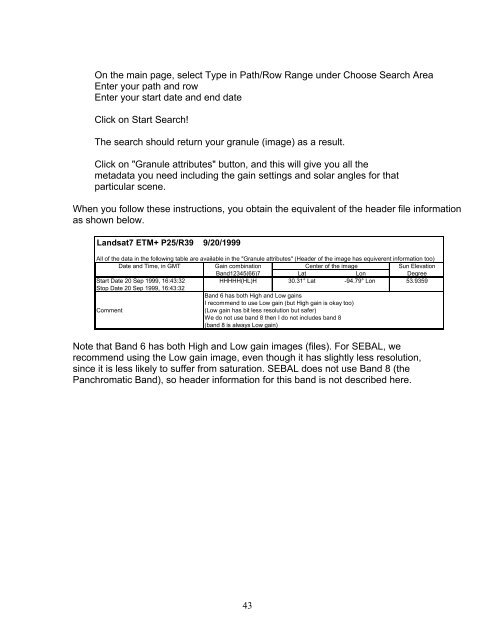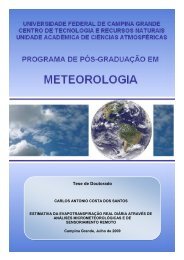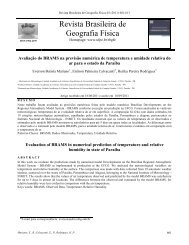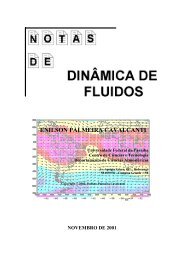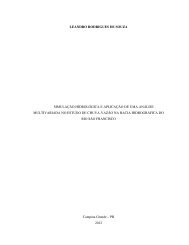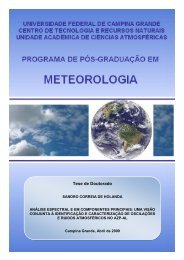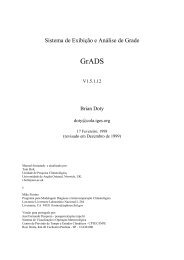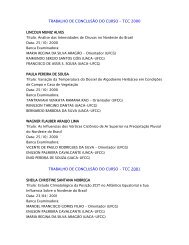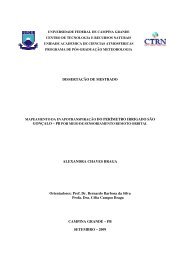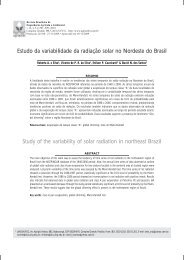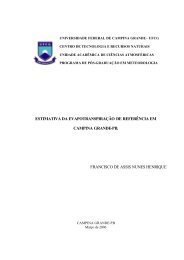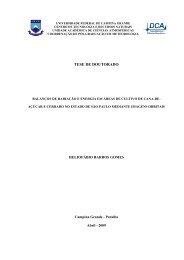You also want an ePaper? Increase the reach of your titles
YUMPU automatically turns print PDFs into web optimized ePapers that Google loves.
On the main page, select Type in Path/Row Range under Choose Search AreaEnter your path and rowEnter your start date and end dateClick on Start Search!The search should return your granule (image) as a result.Click on "Granule attributes" button, and this will give you all themetadata you need including the gain settings and solar angles for thatparticular scene.When you follow these instructions, you obtain the equivalent of the header file informationas shown below.Landsat7 ETM+ P25/R39 9/20/1999All of the data in the following table are available in the "Granule attributes" (Header of the image has equiverent information too)Date and Time, in GMT Gain combination Center of the image Sun ElevationBand12345(66)7 Lat Lon DegreeStart Date 20 Sep 1999, 16:43:32 HHHHH(HL)H 30.31° Lat -94.79° Lon 53.9359Stop Date 20 Sep 1999, 16:43:32Band 6 has both High and Low gainsI recommend to use Low gain (but High gain is okay too)Comment(Low gain has bit less resolution but safer)We do not use band 8 then I do not includes band 8(band 8 is always Low gain)Note that Band 6 has both High and Low gain images (files). For <strong>SEBAL</strong>, werecommend using the Low gain image, even though it has slightly less resolution,since it is less likely to suffer from saturation. <strong>SEBAL</strong> does not use Band 8 (thePanchromatic Band), so header information for this band is not described here.43


